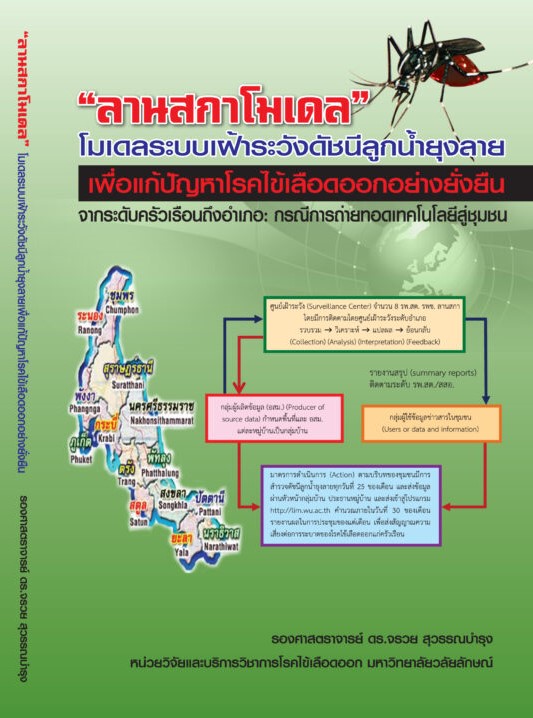
Background: Dengue has been spreading in Thailand for more than 50 years, and the community prevention of dengue transmission is an important strategy to help reduce outbreaks. The larval indices surveillance system is one of the most significant prevention methods at the household and district levels.
Objective: This study sought to develop a larval indices surveillance system based on a specific community context.
Method: Community participation action research (CPAR) studies represent a new approach to studying the high-risk dengue area of Lansaka district, Nakhon Si Thammarat province, Thailand. This study was conducted for 2 years (from 2013 to 2015) and applied the integrated concepts of 1) community capacity building, 2) epidemiology, 3) research design for health development, and 4) an online computer program. The method included five phases: 1) community preparation, 2) situation assessment, 3) the development of the surveillance system, 4) implementation, and 5) evaluation.
Results: The model was designed in partnership with all the stakeholders from 44 villages across 5 sub-districts. The surveillance system consisted of seven steps at the household level based on primary care surveillance centers (PCSCs), as well as four components at the district level based on district surveillance centers (DSCs). The dengue morbidity rate decreased from 164, 151, and 135 cases/100,000 people in 2014, 2015, and 2016, respectively. Moreover, knowledge of both dengue and larval indices among village health volunteers (VHVs) increased significantly (p < .01).
Conclusions: The results from the new system showed a decrease in both the larval indices level and morbidity rate; however, the levels remained higher than the standard. The active surveillance system requires continuous monitoring at both the household and district levels.
